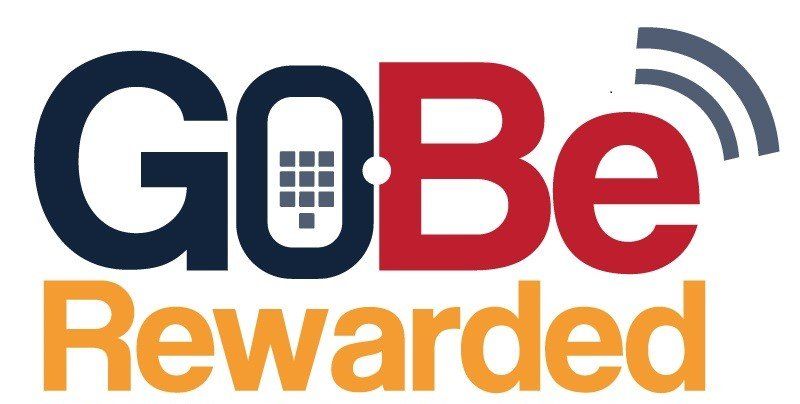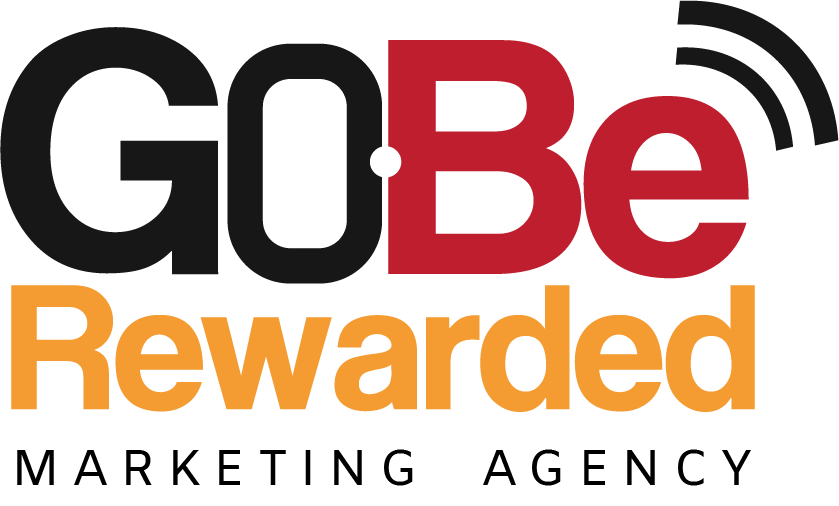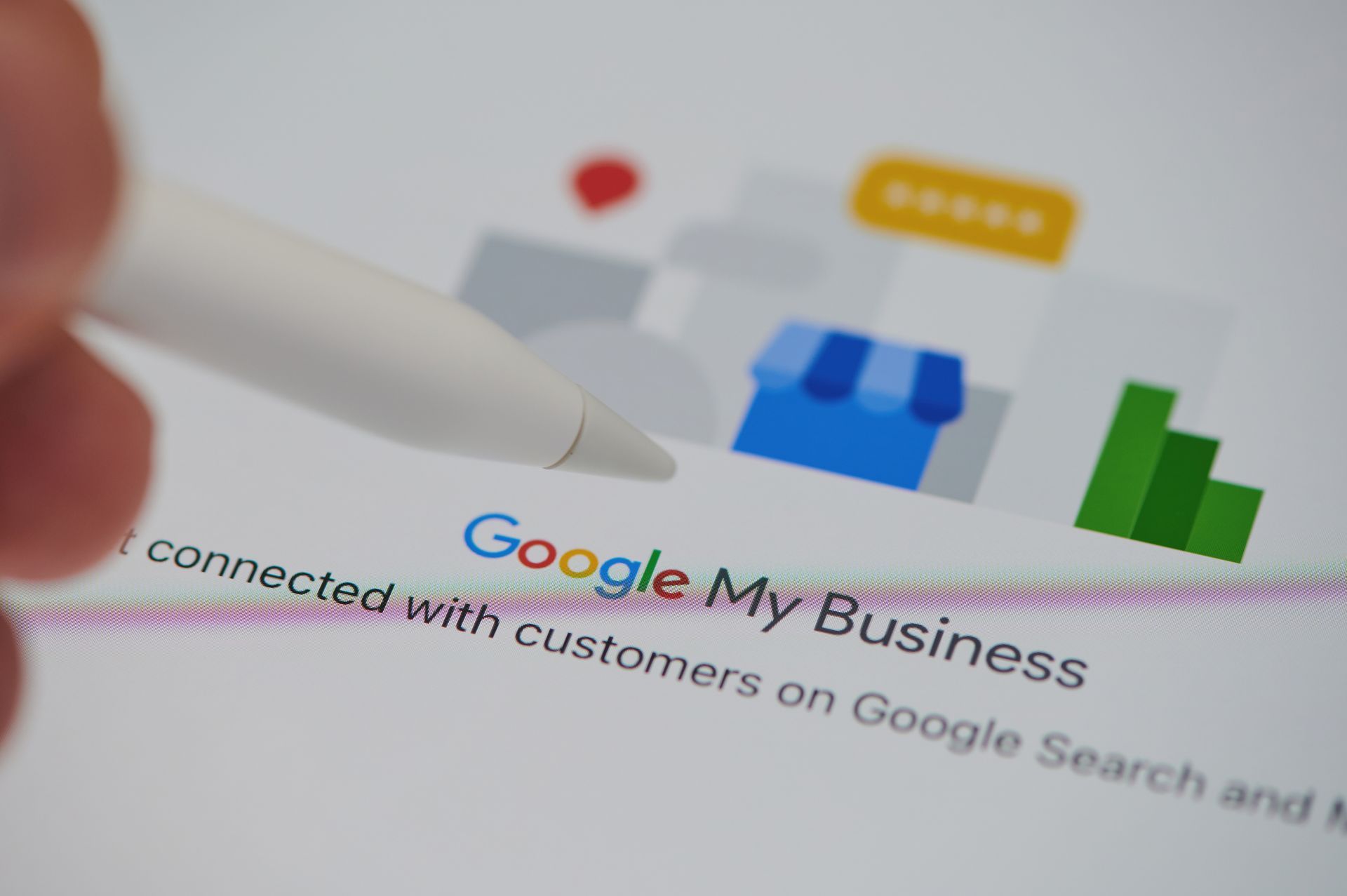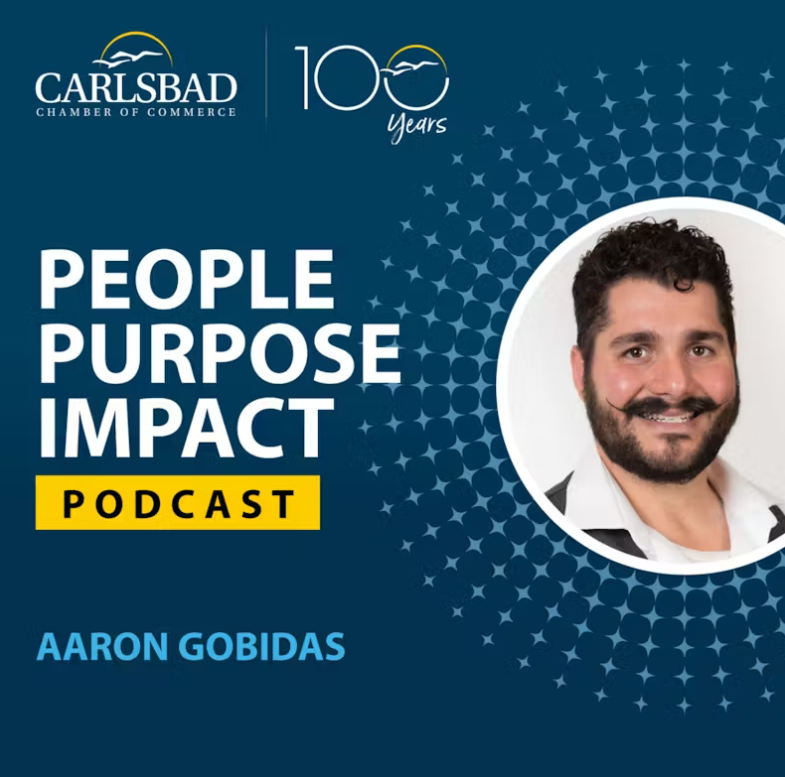GoBeRewarded Marketing Blog
Unlocking the Power of Digital Marketing: Strategies for Success
Popular Blog Tags

For San Diego’s small and mid-sized businesses, digital advertising offers incredible opportunities to reach new customers and grow revenue. However, not all platforms are created equal, and when budgets are tight, selecting the right channel is crucial for maximizing return on investment (ROI). Whether you're a local contractor, restaurant owner, or service provider, your digital ad strategy should focus on what drives the most visibility, leads, and conversions in your area. In this blog, we’ll explore popular digital advertising options and explain why Google Ads often delivers the strongest results for San Diego businesses. 1. Google Ads: The Top Performer for ROI Google Ads (formerly AdWords) allows your business to appear at the top of search engine results for keywords your customers are actively searching. For example, a San Diego resident searching “emergency plumber near me” or “best tacos in North Park” is showing high intent; they’re ready to take action. Why It Works: High Intent Traffic: Google Ads targets users who are already searching for your service. Geographic Targeting: You can zero in on neighborhoods, zip codes, or custom map boundaries within San Diego County. Budget Control: Set daily or monthly budgets and pay only when someone clicks your ad. Performance Tracking: Detailed analytics help you optimize campaigns based on clicks, calls, and conversions. Best For: Local service providers, contractors, restaurants, medical offices, and businesses with a clear search-driven customer base. Pro Tip: Pairing your Google Ads with a high-quality landing page and Google Business Profile increases both clicks and conversions. 2. Facebook and Instagram Ads: Great for Brand Awareness Meta Ads (Facebook and Instagram) are ideal for building awareness and retargeting warm audiences. These platforms allow for demographic, interest, and behavioral targeting, which makes them powerful tools for visually engaging products and lifestyle-focused brands. Why It Works: Highly Visual: Great for showcasing products, services, or events. Audience Targeting: Narrow down your audience by age, interests, or local San Diego communities. Retargeting Capabilities: Re-engage visitors who have already interacted with your business online. Best For: Local boutiques, wellness providers, event-based businesses, and restaurants trying to build buzz and increase repeat traffic. Limitations: These platforms are less effective for driving high-intent leads. Most users are not actively looking for services when scrolling; they’re browsing socially. 3. Yelp Ads: Niche but Effective for Some Industries Yelp Ads are especially effective for service-based businesses where customer reviews matter, such as salons, dentists, and home service providers. Why It Works: Built-In Reviews: Yelp showcases your business along with customer testimonials. Local Search Visibility: Your ad can appear at the top of relevant search results on Yelp. Best For: Restaurants, salons, auto repair shops, and other businesses that benefit from comparison shopping and customer feedback. Limitations: Yelp ads can be costly, depending on your category and level of competition. Additionally, some users have grown wary of Yelp’s pay-to-play nature and ad placements. 4. Don’t Overlook Google Business Profile Optimization If you're not ready for paid advertising or want to supplement your ad spend, optimizing your Google Business Profile (GBP) is one of the best ways to increase local visibility at no cost. Why It Works: Appears in Google Maps and Local Search Results Enables Customers to Call, Visit, or Review Your Business Supports Photos, Offers, and Posts to Promote Engagement Best For: Every San Diego business. It’s essential to optimize your profile regardless of your ad strategy. Tips for Optimization: Keep your business information accurate and complete. Add high-quality photos. Collect and respond to customer reviews. Use local keywords in your business description. When used in conjunction with Google Ads, an optimized profile enhances your credibility and conversion rate. Which Channel Is Best for San Diego Businesses? While Facebook, Instagram, and Yelp all have their place, Google Ads offers the best combination of local targeting, high-intent visibility, and measurable return on investment (ROI) . Especially for service-based businesses or those in competitive local niches, showing up at the top of search results can be the difference between a lead and a lost opportunity. Pairing Google Ads with a robust Google Business Profile establishes a digital foundation that operates 24/7, driving traffic, generating calls, and fostering credibility. Final Thoughts If you’re trying to grow your San Diego business, focus your digital ad budget where it matters most. Start with Google Ads for high-intent leads, complement with social media or Yelp if relevant to your industry, and never underestimate the power of a fully optimized Google Business Profile. Smart targeting, consistent monitoring, and a strategy built on intent are the keys to maximizing your digital advertising return on investment (ROI). Need help building or refining your digital ad strategy? Reach out today to see how we can help your San Diego business grow online.

In a competitive market like San Diego, small businesses need more than just ads and sales pitches to stand out. They need to earn trust, build relationships, and offer genuine value. That’s where content marketing comes in. From blogs to videos to social media posts, content marketing is one of the most powerful tools local businesses can use to grow their brand, connect with their audience, and drive real results. Here’s why content marketing is a game-changer for San Diego’s small businesses, and how to use it effectively. 1. Content Builds Brand Awareness (Without the Hard Sell) Unlike traditional advertising, content marketing doesn’t interrupt or push; it attracts. When you publish helpful blog posts, create educational videos, or share behind-the-scenes content on social media, you're putting your brand in front of your audience in a way that adds value. Example: A San Diego landscaping company could publish blog posts like “Best Drought-Tolerant Plants for Coastal Yards” or create a YouTube series on seasonal lawn care tips. These pieces don’t just inform; they introduce the brand as a knowledgeable and trustworthy resource. The Result: The more value you provide, the more people remember your business. When they’re ready to buy, you’re top of mind. 2. Content Builds Trust and Credibility In a saturated local market, customers don’t just choose based on price; they choose based on trust. Content allows you to demonstrate your expertise and show your human side. Blogs show you understand your industry. Videos let customers see your team in action. Testimonials and case studies build social proof. Example: A San Diego wellness clinic might share a blog post titled “What to Expect During Your First Acupuncture Appointment,” easing fears and showing professionalism before a customer even walks through the door. The Result: When people feel informed and confident about your services, they’re more likely to convert and stay loyal. 3. Content Improves SEO and Increases Website Traffic If you want your business to show up in local search results, content is key. Regularly publishing optimized blog posts gives Google more pages to index and helps you target keywords your audience is searching for. Example: A boutique in North Park might publish blog posts like “Top 5 Local Gift Ideas in San Diego” or “Sustainable Fashion Trends for SoCal Summers.” These keywords help attract local shoppers searching for those topics online. The Result: More visibility in search engines means more organic traffic and more qualified leads. 4. Content Fuels Social Media and Email Marketing Social media and email marketing are only as strong as the content they promote. Blogs, videos, infographics, and even customer spotlights give you something engaging to share. Example: A local café could film a short video showcasing a seasonal drink, write a quick blog about their local suppliers, and then share that content across Instagram, Facebook, and their email newsletter. The Result: With the right content, every platform works together to drive engagement and build brand loyalty. 5. Content Has Long-Term ROI Unlike ads that disappear once your budget runs out, quality content continues to work for your business over time. A blog post written today could bring in traffic and leads for months or even years. Example: A San Diego home inspector writes a comprehensive guide to “Preparing Your Home for Sale in Southern California.” Even a year later, that post can still show up in search results and drive potential clients to their site. The Result: The return on content marketing increases over time, delivering long-term value for your investment. How to Get Started with Content Marketing Here are a few simple steps San Diego small businesses can take to begin: Start a Blog : Use your website to answer common customer questions and showcase your expertise. Invest in Video : Short, authentic videos work well on social media and help personalize your brand. Leverage Local Topics: Tie your content to San Diego-specific events, neighborhoods, and seasonal trends to increase relevance and engagement. Be Consistent: Whether you post weekly or monthly, consistency builds trust and momentum. Track Your Results: Use Google Analytics or social media insights to see what’s working and refine your strategy. Final Thoughts Content marketing is more than a buzzword; it’s a practical, powerful strategy that helps San Diego’s small businesses grow their audience, build trust, and compete with larger brands. By creating and sharing helpful content, you don’t just sell, you connect. Whether you're a local service provider, a boutique shop, or a family-run restaurant, content marketing can be the key to sustainable, long-term growth. Start small, stay consistent, and let your content speak for your brand.

Digital marketing is essential for San Diego businesses looking to attract local customers, increase brand awareness, and drive sales. However, many companies fall into common pitfalls that can waste time, money, and effort. Whether running Google Ads, managing social media, or optimizing your website for search engines, avoiding these mistakes will help you maximize your marketing success. Here are five common digital marketing mistakes San Diego businesses make—and how to fix them.

Building a strong Local SEO strategy is essential if you're a San Diego small-business owner looking to attract more local customers. Local SEO ensures your business shows up when people search for products or services "near me" or within your specific area. Your Google Business Profile (formerly Google My Business) is at the heart of any effective Local SEO strategy. Step 1: Claim and Verify Your Google Business Profile The first step in optimizing your Google Business Profile is to claim and verify it. Visit Google Business and sign in with your Google account. Search for your business name. If it appears, claim it; if not, create a new profile. Complete the verification process. Google typically sends a postcard to your business address with a verification code, though other options, such as email or phone verification, may be available. Why This Matters: Verification signals to Google that you are the legitimate business owner, giving you control over the profile. Step 2: Fill Out Every Section of Your Profile A complete profile increases your chances of ranking higher in local search results. Ensure all information is accurate and detailed. Business Name: Use your official business name. Category: Select the most relevant category (e.g., "Coffee Shop," "Landscaper"). Address: Provide your physical address if you serve customers on-site. Service Area: Define the areas you serve if you operate remotely or provide delivery. Hours: Keep your operating hours accurate, including holidays. Phone Number: Add a local, trackable phone number. Website: Link to your website or a relevant landing page. Pro Tip: To boost local relevance, include your San Diego neighborhood or region (e.g., "North Park," "La Jolla," etc.) in your profile. Step 3: Write an Optimized Business Description Your business description is a chance to introduce yourself, explain your offerings, and why customers should choose you. Use relevant keywords naturally, like "San Diego landscaping services" or "best tacos in Gaslamp Quarter." Focus on what makes your business unique. Keep it concise (750-character limit) and engaging. Example: "Located in the heart of Hillcrest, our San Diego coffee shop offers organic, locally roasted coffee and freshly baked pastries. We’re proud to be a community hub for locals and visitors alike!" Step 4: Upload High-Quality Photos and Videos Visual content helps your profile stand out and gives customers a better understanding of your business. Add photos of your storefront, interior, team, and products/services. Include a logo and a professional cover image. Upload short videos showcasing your services or testimonials. Pro Tip: Geo-tag your images before uploading them. This adds location data, which can improve local search rankings. Step 5: Collect and Respond to Reviews Customer reviews are critical for Local SEO and building trust with potential customers. Ask for Reviews: Encourage satisfied customers to leave reviews. For example, after a completed service, send a polite email or text with a direct link to your Google profile. Respond to Reviews: Thank customers for positive feedback and address negative reviews professionally and constructively. Pro Tip: Use responses to subtly reinforce keywords. For instance, "Thank you for choosing our San Diego HVAC services! We’re thrilled you were satisfied with the quick repair." Step 6: Use Google Posts to Engage Your Audience Google Posts allow you to share updates, promotions, events, and news directly on your profile. Keep posts brief but engaging, and include a clear call to action (CTA) such as "Learn More," "Call Now," or "Book Today." Update posts regularly to keep your profile fresh and relevant. Example Post: "🌞 Summer Special! Get 10% off landscaping services in San Diego this July. Book your appointment today and transform your outdoor space! Call us now." Step 7: Add Products and Services For businesses offering products or services, listing them on your Google Business Profile can provide additional visibility. Include detailed descriptions for each product or service. Use relevant keywords (e.g., "pool cleaning in San Diego"). Set competitive pricing if applicable. Example: Service: "San Diego Pool Cleaning" Description: " Our professional pool cleaning services ensure your pool stays sparkling clean and safe all year round." Step 8: Keep Your Profile Updated An updated profile can help your credibility and ranking. Regularly update your profile with: New photos or videos Changes to business hours Upcoming promotions or events Seasonal offerings Step 9: Monitor Insights and Adjust Your Strategy Google Business Profile provides valuable insights into how customers find and interact with your business. Search Queries: See what keywords people use to find your business. Customer Actions: Track how many people call, visit your website, or request directions. Photo Views: Analyze which photos resonate most with your audience. Use this data to refine your profile and improve engagement. Why Focus on Google Business Profile? Optimizing your Google Business Profile is one of the most effective ways to boost your Local SEO efforts for a local business in San Diego. In a competitive market like San Diego, this strategy ensures you stand out in local search results, attract more customers, and build long-term trust. Start optimizing your profile today, and watch your business climb the local rankings while drawing in more San Diego customers. Would you like an expert team to handle this for you? Contact GoBeRewarded today and ask about our Off-Page SEO package .
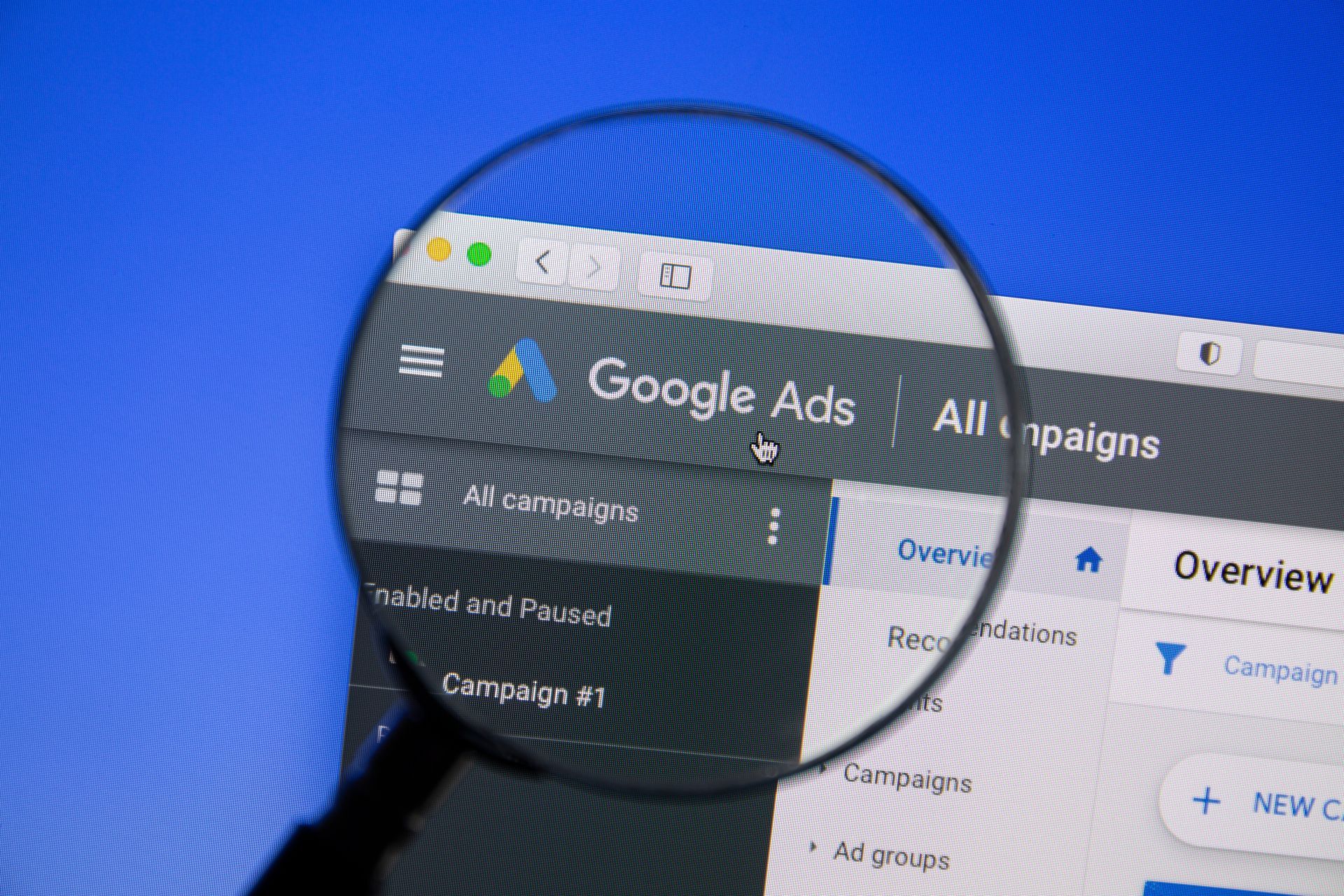
Google Ads is one of the most powerful tools for businesses looking to boost their visibility and drive traffic. But once your campaigns run, how do you make sense of the data you're seeing? Whether you’re a small San Diego business owner or just getting started with digital marketing, understanding how to analyze Google Ads data is key to refining your marketing strategies and improving your return on investment (ROI). This beginner’s guide will explain essential metrics to monitor and provide actionable tips for improving campaign performance. 1. Start with the Basics: Key Metrics to Watch Before diving into the complex details of Google Ads reporting, it’s important to understand the key metrics that give you insight into how your ads perform. These are the building blocks for improving your campaigns. a. Impressions Impressions tell you how often your ad is shown. It’s a useful metric for understanding the reach of your campaign. For example, if your ad for a San Diego home improvement service appears in front of 10,000 users, you’ve earned 10,000 impressions. However, impressions alone don't tell the full story, as your ad may be shown without being clicked. How to Use This Data: High impressions but low engagement (clicks) could indicate your ad isn’t resonating with your audience or that your targeting needs adjustment. b. Clicks The number of clicks your ad receives is one of the most direct indicators of interest. Clicks show how many people were intrigued enough by your ad to learn more. How to Use This Data: Many clicks are a good sign, but ensure you're driving quality traffic. If you get a lot of clicks but not many conversions, it may be time to refine your ad copy, landing page, or audience targeting. c. Click-Through Rate (CTR) CTR is the percentage of people who clicked on your ad after seeing it. It’s calculated by dividing the number of clicks by the number of impressions. How to Use This Data: A low CTR means many people see your ad but aren’t clicking. You may need to improve the ad copy, adjust your keywords, or revise your audience targeting. For example, if you're a San Diego café offering seasonal specials and see a low CTR on ads promoting them, it might be time to refresh your message or update your imagery. d. Conversion Rate Conversions happen when someone completes a desired action after clicking your ad, such as purchasing, signing up for a newsletter, or filling out a contact form. How to Use This Data: A low conversion rate could signal that your landing page isn’t effective. Ensure that the landing page reflects the ad's promise, is user-friendly, and has a clear call to action (CTA). e. Cost Per Click (CPC) CPC shows how much you’re paying for each click on your ad. This metric helps you gauge the cost-effectiveness of your campaigns. How to Use This Data: A high CPC might indicate you're in a competitive market or targeting highly sought-after keywords. If your budget drains quickly without enough conversions, consider refining your keyword strategy or adjusting your bids. f. Cost Per Conversion This is the average cost of acquiring one customer or lead from your ads. It's calculated by dividing the total cost of your ads by the number of conversions. How to Use This Data: If your cost per conversion is too high, you might need to narrow down your audience, optimize your landing pages, or rethink your keywords. 2. Audience Insights: Who’s Clicking on Your Ads? Understanding who engages with your ads is as important as the number of clicks. Google Ads provides detailed audience insights, which can help you refine your targeting. a. Demographics Check the age, gender, and location of users interacting with your ads. For instance, if you’re a local San Diego business, you’ll want to ensure that most of your clicks come from users within your geographical target area. How to Use This Data: If you notice most of your ad spend is going toward out-of-area clicks, adjust your location targeting to focus solely on San Diego and nearby cities. Similarly, if your services cater to specific demographics, such as seniors or young professionals, use the data to refine your ads for those groups. b. Device Performance See whether users are clicking from mobile, desktop, or tablet. This can offer insight into how your ads are performing across different devices. How to Use This Data: If most of your clicks come from mobile users but your conversion rate is low, it may be time to optimize your landing pages for mobile devices. For example, a San Diego restaurant may need to ensure its menu is easily read and navigated on smartphones. 3. Improving Your Campaign Performance Now that you understand the core metrics, let’s examine how to improve your Google Ads performance using the data you've gathered. a. Refine Your Keyword Strategy Keywords are the backbone of your Google Ads campaigns. Analyze your Search Terms Report to see which keywords drive clicks and conversions, and identify any that are wasting your budget. Actionable Tip: If certain keywords have high impressions but low CTRs, consider pausing them or adjusting your ad copy to match the search intent better. For instance, if you run a San Diego landscaping business and notice that “landscape design San Diego” leads to more conversions than “landscape San Diego,” focus more on the specific terms yielding results. b. A/B Testing Ads Running different versions of ads (A/B testing) allows you to see which ad copy, headlines, or images work best. Actionable Tip: Try different messaging for your San Diego business. For example, a local HVAC company could test ads focusing on “quick service” versus ads promoting “affordable rates” to see which resonates more with potential customers. c. Optimize Your Landing Pages If your CTR is high but your conversion rate is low, the issue might be your landing page. Ensure that it aligns with your ad’s promise, loads quickly, and provides a seamless experience. Actionable Tip: Use tools like Google Optimize to experiment with different landing page layouts, CTA buttons, or offers. A smoother user experience often leads to better conversions. d. Adjust Bids for High-Performing Keywords If certain keywords or demographics consistently deliver good results, consider increasing your bids to capture more traffic from those segments. Actionable Tip: For a San Diego retail store, if ads targeting “San Diego summer sales” perform well during certain months, raise your bids for these terms to capture more seasonal traffic. 4. Conclusion: Turning Data Into Decisions Analyzing your Google Ads data is the key to refining your marketing strategies and improving your overall performance. By focusing on key metrics like CTR, conversion rate, and cost per conversion, and continuously refining your keyword strategy, ad copy, and landing pages, you can significantly improve the effectiveness of your campaigns. For San Diego businesses, leveraging Google Ads data helps you stay competitive in a crowded market. It allows you to allocate your budget efficiently and get the best possible return on your marketing investment. Start analyzing your Google Ads data today, and watch your business thrive!

For small businesses in San Diego, crafting an effective digital marketing strategy involves making critical decisions about where to allocate limited resources to achieve the best results. Pay-Per-Click (PPC) advertising and Search Engine Optimization (SEO) are two of the most prominent strategies. Each has its unique benefits and challenges, and understanding these can help San Diego business owners make informed decisions that maximize their marketing budgets. Pay-Per-Click (PPC) Advertising What is PPC? PPC is a model of internet marketing in which advertisers pay a fee each time one of their ads is clicked. It's essentially a way of buying visits to your site, rather than attempting to “earn” those visits organically. Google Ads is one of the most popular PPC platforms. Benefits: Immediate Traffic: Unlike SEO, PPC ads can drive traffic to your website immediately after the campaign starts. This is particularly useful for new businesses looking to gain quick exposure or for seasonal promotions. Targeted Audience: PPC campaigns can be finely tuned to target specific demographics based on location, browsing habits, and more. For San Diego businesses, this means ads can be specifically directed at local audiences or tailored to visitors in the area. Measurable ROI: PPC advertising offers clear metrics that allow you to see the exact cost of each click and how much you are spending compared to the revenue generated. This makes it easier to measure ROI directly and make adjustments in real-time. Challenges: Cost: Costs can escalate quickly in competitive sectors. Since you pay for each click, inefficient campaigns can consume a budget rapidly without delivering proportional returns. Skill Required: Effective PPC campaigns require good strategy and constant management. Keyword research, ad copywriting, and ongoing campaign adjustments demand time and expertise. Temporary: The traffic from PPC is tied directly to the campaign. Once you stop paying, the traffic drops. Search Engine Optimization (SEO) What is SEO? SEO is the practice of increasing the quantity and quality of traffic to your website through organic search engine results. It involves optimizing your website and content to appear higher in search engine rankings for specific keywords. Benefits: Cost-Effective: Over time, SEO can be more cost-effective than PPC. While it requires an upfront investment in content creation and site optimization, it does not incur costs per click, and well-ranked sites continue to attract traffic over time without additional spending. Long-Term Benefits: SEO efforts can lead to sustained traffic growth. High rankings can provide ongoing brand visibility and credibility without needing continuous direct investment. Quality Traffic: SEO attracts users who are actively searching for your products or services, which can lead to higher conversion rates as the traffic is more relevant. Challenges: Time-Consuming: SEO results take time. It can take months to see the results of SEO efforts, which can be frustrating for businesses looking for immediate results. Complexity: SEO involves multiple factors, from on-site content to technical SEO to backlinks. The complexity of these elements requires expertise and ongoing learning as search algorithms evolve. No Guarantees: Search engines' ever-changing algorithms can make achieving and maintaining high rankings unpredictable. Competitor actions and updates can also affect your site's performance. Making the Right Choice for Your Business San Diego small businesses should consider their specific needs, budget, and timeline when choosing between PPC and SEO. For immediate results or short-term campaigns, PPC might be the best choice. SEO may be more appropriate for long-term investment in your brand’s visibility and organic growth. Often, a balanced approach that utilizes both strategies in different proportions can be the most effective way to maximize returns from your digital marketing budget. In conclusion, both PPC and SEO offer valuable opportunities for growing your business's online presence. By understanding the strengths and limitations of each, San Diego small businesses can better plan their digital marketing strategies to fit their unique goals and budget constraints.

The Power of Collaboration: Why Business Owners Should Work Hand in Hand with Their Marketing Agency
Creating effective campaigns and compelling designs is about more than creativity and technical know-how. It's also about collaboration—specifically, the collaboration between business owners and their marketing agencies. Business owners possess unique insights into their industry, customer base, and personal business ethos, making their involvement crucial for the success of any marketing initiative. Companies like GoBeRewarded have recognized this essential truth and have strategically built their processes to work closely with business owners, ensuring that each campaign is creative and deeply aligned with the business’s core objectives and values. Understanding the Importance of Collaboration in Marketing Business owners bring industry-specific knowledge and firsthand experience to the table. They understand their customers' needs, preferences, and pain points better than anyone else. This depth of knowledge is invaluable when crafting targeted marketing strategies that speak directly to the intended audience. Here’s why this collaboration is essential: Insider Knowledge: Business owners know the nuances of their industry—what has worked in the past, what hasn’t, and why. This insider information is crucial for crafting strategies that are not only innovative but also grounded in industry realities. Brand Alignment: Who better to understand a company’s ethos than the people who built it? Business owners ensure that every marketing message aligns perfectly with the brand’s values and vision, maintaining consistency across all channels. Resource Optimization: Business owners can provide critical insights into resource allocation. They know their budget constraints and priorities, which helps them plan and execute campaigns that maximize ROI without wasteful expenditures. Real-Time Feedback and Agility: In the fast-paced world of digital marketing, quick, on-the-ground decisions are often needed. Business owners’ direct involvement ensures that campaigns can be tweaked in real time, enhancing their effectiveness and responsiveness to market changes. How GoBeRewarded Facilitates Effective Collaboration Recognizing the importance of this partnership, GoBeRewarded has designed a collaborative approach that harnesses the strengths of both the marketing team and the business owners. Here’s how GoBeRewarded’s approach benefits businesses: Initial Consultations and Regular Meetings: From the outset, GoBeRewarded engages with business owners through in-depth consultations to understand their vision, goals, and specific market dynamics. Regular meetings keep this dialogue open throughout the campaign’s lifespan. Transparent Processes: GoBeRewarded maintains a high level of transparency in its processes, allowing business owners to see and understand how strategies are implemented and their insights are incorporated. Customized Strategy Development: Each strategy is tailored to the business owner’s insights, the company's market positioning, and the competitive landscape. This bespoke approach ensures that marketing efforts are highly targeted and effective. Feedback Integration: GoBeRewarded welcomes and actively solicits feedback from business owners. This feedback is crucial for refining strategies and adjusting to ensure the campaign’s success. Educational Support: Understanding that some business owners may wish to learn more about digital marketing, GoBeRewarded provides educational resources and workshops to help them get more involved and informed about the process. Conclusion: Strengthen Your Marketing Through Collaboration The synergy between business owners and marketing agencies can create a powerful force for generating successful outcomes in digital marketing campaigns. For businesses looking to enhance their market presence, choosing an agency like GoBeRewarded that values and facilitates close collaboration will ensure that campaigns resonate more deeply with target audiences and that they are coherent with the business’s overall strategic goals. This collaborative model results in more effective marketing efforts and empowers business owners to play a proactive role in their company’s digital journey.
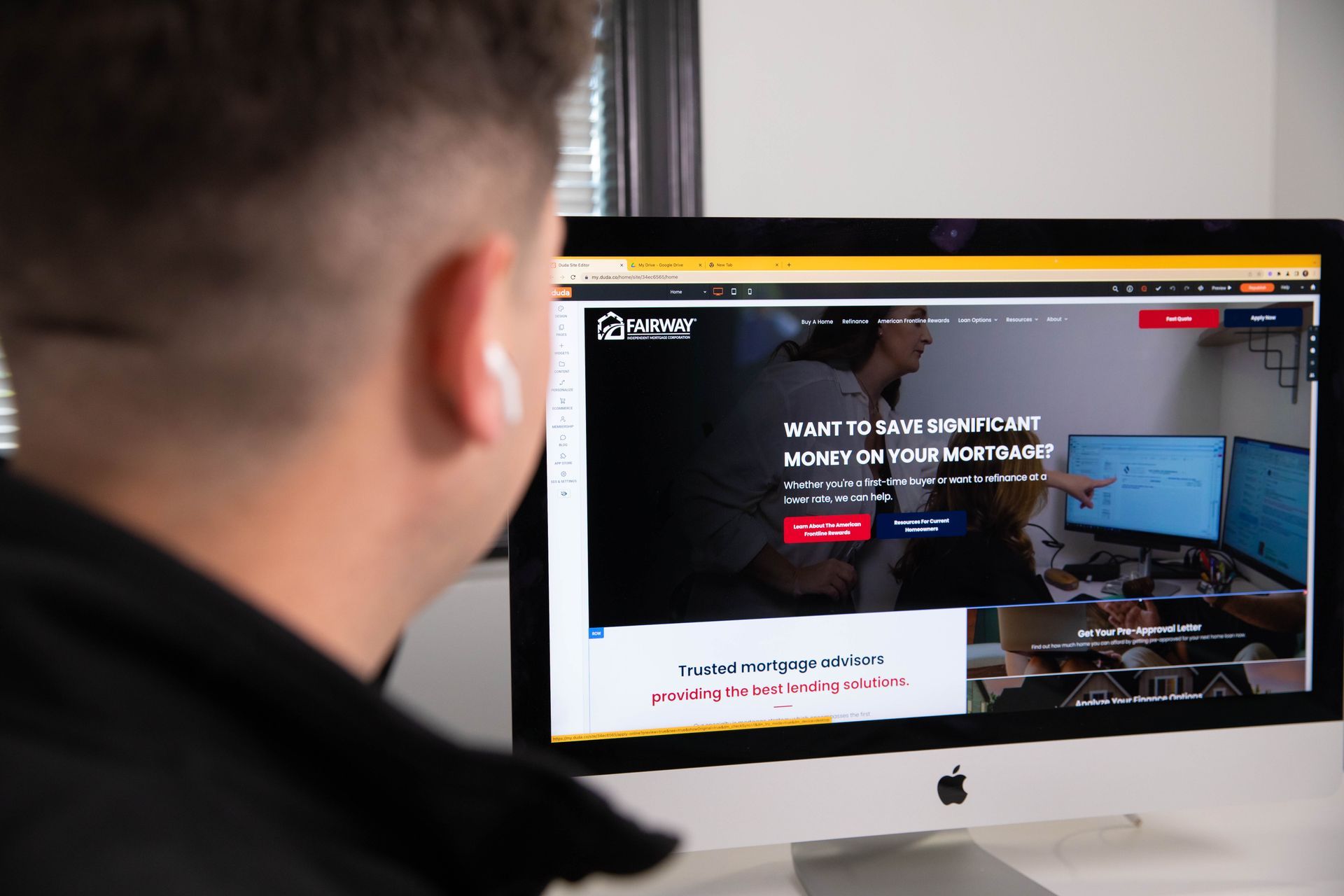
A well-designed landing page can be the difference between a visitor bouncing off your site and a new customer converting. Having a high-converting landing page for San Diego businesses is crucial for capturing leads and driving sales. In this blog post, we'll explore key elements that can help you design landing pages that effectively convert visitors into leads or customers. 1. Compelling Calls-to-Action (CTAs) Clear and Actionable Language Your CTA should leave no room for confusion. Use clear, concise, and actionable language that tells visitors exactly what to do next. For example, "Get Your Free Quote," "Sign Up Now," or "Book a Consultation." Visibility and Placement Ensure your CTAs are prominently placed on your landing page. They should be above the fold, meaning visitors shouldn't have to scroll to see them. Using contrasting colors can also help your CTAs stand out. Create a Sense of Urgency Encourage immediate action by creating a sense of urgency. Phrases like "Limited Time Offer" or "Only a Few Spots Left" can prompt visitors to act quickly. 2. Testimonials and Social Proof Leverage Customer Testimonials Customer testimonials add credibility and trust to your landing page. Include quotes from satisfied customers, along with their names and photos. Video testimonials can be particularly impactful, providing a more personal touch. Display Trust Badges and Certifications Showcasing trust badges, certifications, and awards can further enhance your credibility. If your business is BBB accredited or has industry-specific certifications, for example, display these prominently. Highlight Case Studies Case studies provide detailed examples of how your product or service has helped other customers. Highlight specific results and benefits to demonstrate the value you can provide. 3. High-Quality Images and Visuals Use Professional Photography High-quality images can significantly impact the perception of your brand. Invest in professional photography that showcases your products, services, and team. Authentic and high-resolution images can make your landing page more appealing and trustworthy. Incorporate Videos Videos are a powerful way to engage visitors and convey your message quickly. Consider including explainer videos, product demonstrations, or customer testimonials. Ensure your videos are short, engaging, and relevant to your audience. Optimize for Fast Loading Ensure that all images and videos are optimized for fast loading times. Slow-loading pages can lead to higher bounce rates and lower conversions. Use image compression tools and host videos on reliable platforms to maintain speed without compromising quality. 4. Streamlined and Relevant Content Focus on Benefits, Not Features Highlight your product or service's benefits, rather than just listing features. Explain how your offering solves problems or improves the lives of your customers. Use bullet points and short paragraphs to make the content easy to read. Personalize Your Message Tailor your landing page content to speak directly to your target audience. Use language and tone that resonates with them and addresses their needs and pain points. Include a Strong Headline Your headline is often the first thing visitors see, so make it count. Craft a headline that grabs attention and communicates the value of your offering. It should be concise, compelling, and relevant to your audience. 5. User-Friendly Design and Navigation Keep it Simple and Clean A cluttered landing page can overwhelm visitors and distract them from your primary message. Keep the design simple and clean, with plenty of white space. Focus on one main goal per landing page to avoid confusion. Ensure Mobile Responsiveness With many users accessing websites via mobile devices, your landing page must be mobile-friendly. Ensure all elements, including CTAs and images, are easily accessible and look good on smaller screens. Use Consistent Branding Maintain consistent branding across your landing page to reinforce your brand identity. Use your brand's colors, fonts, and imagery to create a cohesive and professional look. Conclusion Creating a high-converting landing page for your San Diego business involves a combination of compelling CTAs, persuasive testimonials, high-quality images, streamlined content, and user-friendly design. Focusing on these key elements can increase your chances of converting visitors into leads or customers. At GoBeRewarded, we specialize in helping businesses create effective digital marketing strategies, including designing high-converting landing pages. Contact us today to learn how we can help you achieve your marketing goals.

In San Diego's bustling markets, small businesses face the constant challenge of standing out in a crowded digital landscape. Local SEO (Search Engine Optimization) has emerged as a critical strategy for these businesses, transforming how they attract local customers and compete effectively in their regional market. This blog post explores why local SEO is indispensable for San Diego small businesses and how it can dramatically improve their online visibility and foot traffic. The Importance of Local SEO Local SEO enhances a business's visibility in localized search results on Google and other search engines. For small businesses in San Diego, this means appearing in front of potential customers actively searching for products or services they offer in the area. Consider these compelling reasons why local SEO is essential: Targeted Geographic Campaigns: Local SEO allows businesses to target campaigns specifically in the San Diego area, ensuring marketing efforts are focused directly on the most relevant audience. This geographical targeting is more cost-effective and yields higher returns on investment. Increased Web Traffic: Small businesses can dramatically increase their web traffic by optimizing for local search terms and utilizing local business listings. This increased exposure leads to more website visits and potentially, more conversions. Enhanced Online Presence: Businesses can strengthen their online presence through tools like Google My Business, Yelp, and other local directories. Complete and optimized listings improve search rankings and give potential customers easy access to business information, such as hours, location, and services. Competitive Advantage: Many small businesses in San Diego may not yet have fully optimized for local SEO. Adopting these strategies can give your business a significant edge over less digitally savvy competitors. How Local SEO Benefits San Diego Small Businesses Implementing local SEO strategies can reap numerous benefits for a small business. Here’s how it works: Optimizing Google My Business (GMB): One of the most powerful tools for local SEO, GMB allows businesses to manage their online information across Google, including Search and Maps. You enhance your local search rankings and visibility by keeping your GMB information up-to-date and encouraging customers to leave reviews. Using Local Keywords: Incorporating local keywords such as "San Diego bakery" or "IT support in San Diego" into your website’s content helps Google understand where your business is located and what you offer, making it more likely to show your site to users in that area. Building Local Backlinks: Getting links from well-regarded local websites (like local newspapers or business associations) can boost your SEO rankings by proving to search engines that your business is relevant and respected in the local community. Creating Location-Specific Content: Tailoring content to reflect local events, news, or activities can attract local traffic to your website. For example, a blog post about participating in a San Diego community event can resonate well with local audiences. Mobile Optimization: With the increase in mobile searches, having a mobile-optimized website is crucial. Many local searches occur on mobile devices as people look for businesses while on the go in San Diego. Start Leveraging Local SEO Today For San Diego small businesses looking to grow and thrive, local SEO is not just a marketing strategy; it's a necessary investment. By improving your local SEO, you're enhancing your visibility, connecting with your community, and building a stronger local presence. Begin by assessing your current local SEO performance and identifying areas for improvement. If you need help optimizing your efforts, consider engaging a local SEO expert . With the right strategies in place, you’ll soon see an increase in local traffic—both online and offline—which can lead to greater sales and a solidified place in the San Diego market.
